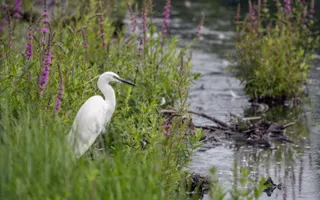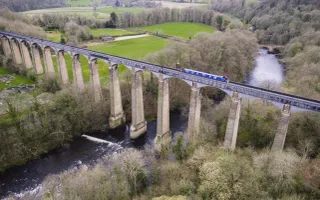Flowering rush facts
Scientific name: Butomus umbellatus
Family: Butomaceae
Origin: Native
Type: Perennial
Flowering rush and our canals
This pretty rush-like plant brightens up the water’s edge along our canals. It grows in tall, upright stems with clusters of pink flowers and spreads with creeping rhizomes. Along with other waterside plants, flowering rush provides a valuable habitat for wildlife species, like dragonflies and damselflies.
Flowering rush was accidentally introduced to North America in the late 19th century, where it’s become an aggressive invasive species.
What does flowering rush look like?
While flowering rush is not a true rush, it's a tall plant that looks a lot like a one with clustered cup-shaped pink flowers. The leaves are long, grass-like green stems.
Where to find flowering rush
Flowering rush grows on the shallow margins of our canals and reservoirs. It prefers still and slow-moving waters up to a depth of three metres. You’ll find flowering rush on many of our canals, including the Lancaster and Montgomery canals, as well as Brent Reservoir.






